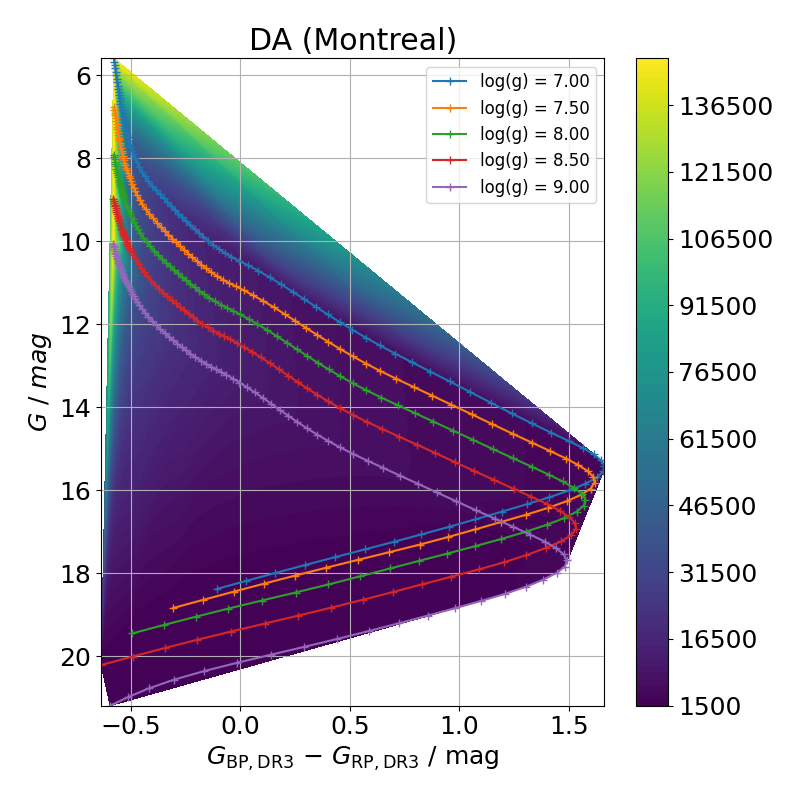White Dwarf Atmosphere¶
The only synthetic photometry publicly available over a smooth grid of wide ranges of temperature and surface gravity is the Montreal model. The tables are provided with bolometric and absolute magnitudes on various photometric systems in pure hydrogen (DA) and pure-helium (DB) in the range of \(\log(g)=7.0 - 9.0\), as well as the effective temperature and total cooling time (though this grid is sparse compared to their complementary cooling model grids). These include the Johnson-Kron-Cousins (\(U, B, V, R \& I\)), Two Micron All Sky Survey (2MASS) \(J, H \& K_{s}\), Mauna Kea Observatory (MKO) \(Y, J, H \& K\), Wide-field Infrared Survey Explorer (WISE) \(W1, W2, W3 \& W4\), Spitzer Space Telescope Infrared Array Camera (IRAC) \([3.6], [4.5], [5.8] \& [8.0]\) \(\mu m\), Sloan Digital Sky Survey (SDSS) \(u, g, r, i \& z\), Panoramic Survey Telescope and Rapid Response System (Pan-STARRS 1) g, r, i, z & y, Gaia \(G, G_{\mathrm{BP}}\,\&\,G_{\mathrm{RP}}\), and Galaxy Evolution Explorer (GALEX) \(FUV\) and \(NUV\).
The stellar masses and cooling ages are based on the latest generation of evolutionary sequences (Bedard et al. 2020). The choice of thick (\(q_H \equiv \frac{\mathcal{M}_H}{\mathcal{M}*} = 10^{-4}\)) and thin (\(q_H = 10^{-10}\)) hydrogen layers for the pure-hydrogen and pure-helium model atmospheres, respectively. Details of the colour calculations are described in Bergeron, Wesemael & Beauchamp 1995 and Holberg & Bergeron 2006. The DA grid covers a temperature range \(T_{\mathrm{eff}} = 2\,500 - 150\,000\) K while the DB grid covers \(T_{\mathrm{eff}} = 3\,250 - 150\,000\) K. Both model are computed with surface gravities \(\log(g) = 7.0 - 9.0\) (Blouin, Dufour & Allard 2018, Bedard, Bergeron, Brassard & Fontaine 2020, Tremblay, Bergeron & Gianninas 2011, Bergeron et al. 2011, Kowalski & Saumon 2006). See below for the cooling models at different surface gravities.
